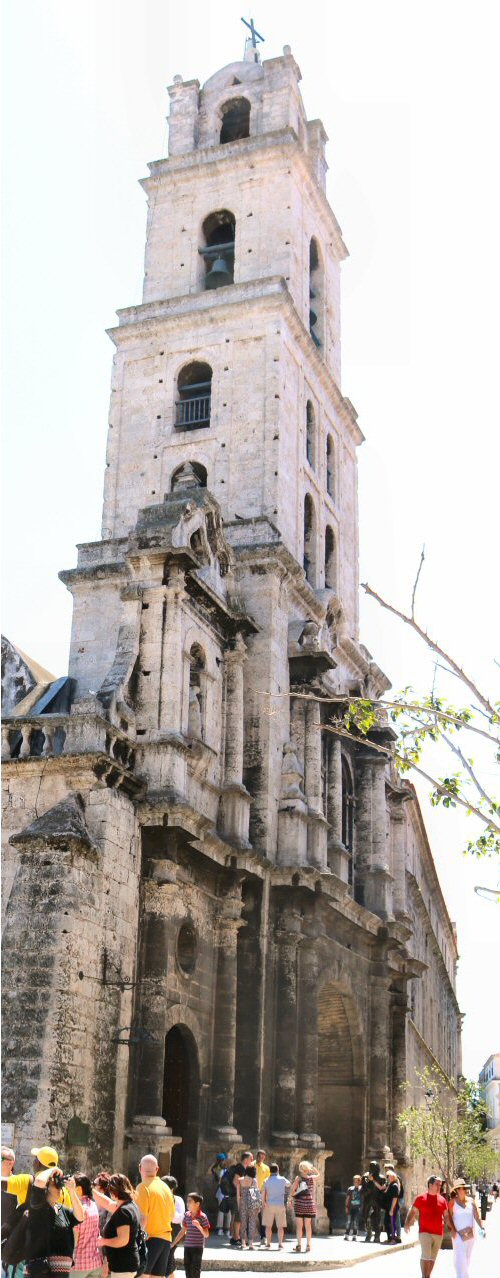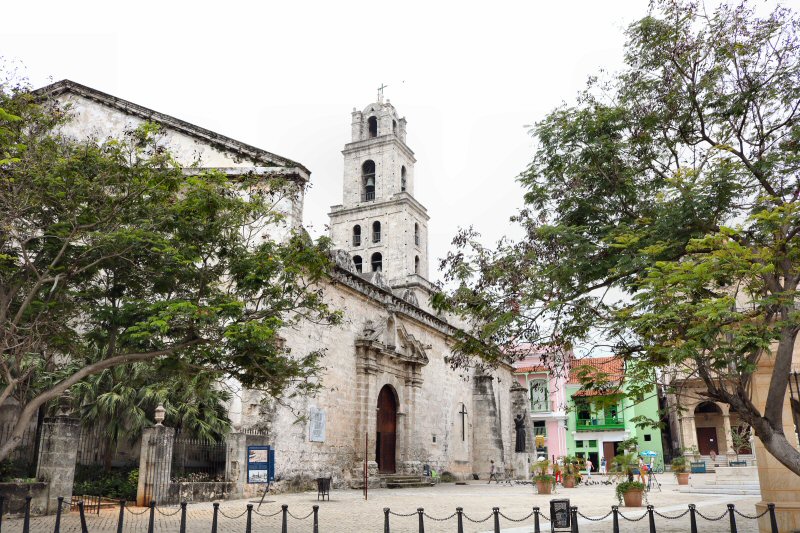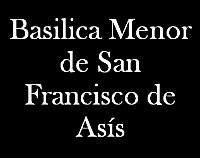
The Basilica Menor de San Francisco de Asís is an
important monument, as it recalls the presence of the
Franciscan Order in Cuba. The Franciscan friars arrived in
the island first on Colombus’ second voyage. Thereafter,
they took charge of the evangelization of the New World,
setting off from here for destinations throughout the
Spanish Americas. By 1953 there were 105 friars working in
Cuba, whereas today there are only less than the total
number of fingers of one hand.
The basilica was built as the
monastery of the Franciscan community at the end of the 16th
century. Its construction began in 1548, and although the
convent was inaugurated in 1575, its construction continued
until 1591. At that time the Plaza de San Francisico was
just like a strip of ground, being the extension of the
Oficios street, and the monastery of San Francisco de Asís
was occupying an area at the shore, adjacent to a small
inlet in that the galleons unloaded their goods and the
slaves and received service. It was located so close to the
seashore that part of the building had to be constructed on
piles. The monastery took its name from Saint Francis of
Assisi, the founder of the Franciscan
order.
The monastery was a kind of missionary school for the
Franciscan friars that were using this in reaching the
destinations throughout the Spanish America. It was
seriously damaged by the storms in 1680 and 1692. When its
tower was toppled by a hurricane in 1694, it was decided to
renovate the monastery by altering it in the baroque style
of the day. It was demolished in 1719 and the construction
of the new church began in 1730. The renovation process was
completed in 1739. The same year the convent named by the
Pope as the Basilica Menor de San Francisco de Asís. It was
consecrated by the Franciscan Bishop Juan Luis Lazo de la
Vega y Cancino with the rank of Basilica Minor. It was
considered Havana’s premier house of worship, attached to
the Basilica San Giovanni Laterano in Rome.
The monks used the basilica as a
baccalaureate school for centuries, so that the students had
classes in grammar, philosophy, theology and mathematics.
The basilica served also as a cemetery for most of the
colonial personages of the 17th and 18th centuries, such as
the bishops, counts, general captains, even the viceroy of
Peru and the Marchioness of Monte Claro. It was a custom of
the Franciscan friars to distribute a soup to the poor from
the side door of the church, located in Plaza de San
Francisco, daily at noon. This tradition was maintained
until the order was suspended in the 19th century.
In 1762, when Havana was seized by
the English troops, the basilica was used by the English for
their worship. In the eleven months of the British
occupation they installed a Masonic lodge there. On the
other hand, it is also argued that the English used the
church as a barn and stable for military horses.
One year later the rule of the
English ended, but the Catholic Church considered the
basilica to be desecrated by the Protestants and decided not
to use it as their worship anymore. However, the monks
continued to occupy the convent.
In 1841, when the Order of San
Francisco was reinstated, María Cristina, the Queen of
Spain, ordered to close the basilica and to move all the
monks that still continue with their worship in the
basilica, to the closest convent, the Iglesia de San
Augustín that stands at the intersection of the Amargura
street with the Cuba street. In 1842 the Spanish Ministry of
Finance announced the disentailment of the assets of the
clergy that resulted in the disappearance of the countless
valuable pieces day by day that were treasured up in the
convent. In 1842 the Post Office moved to the building.
Originally the plan of the church
was divided in three naves, forming a cross with the dome at
the crossing section. The cyclone in 1846 damaged the
building, so that the apse, the transept and the dome of the
church that were in poor state, were demolished in 1850. At
the place where the dome of the church was erected, lies a
park in homage of Mother of Calcutta today that was
inaugurated in 1999.
After the independence from
Spain in 1907, it became the property of the government, and
the magnificent building was destined to a warehouse, office
of the general archive, office of the Correos y Telegrafos
(Mails and Telegraphs) and the Customs of the Port of Havana
sequentially. For a long period, the building was the seat
of the General Directorate of
Communications that later became a ministry. After the
revolution, the
Ministry of Communications moved to its new building in
Plaza de la Revolución in 1957 and the building became a
warehouse again. In the 1980s excavations were made in the
area of the convent. The Escuela Taller Gaspar
Melchor de Jovellanos, a school with the mission to create
young specialists that will rescue and restore old buildings
and monuments in Havana, participated in this archeological
work.
After the declaration of
the Old City the World Heritage Site,
a detailed restoration was
carried out in the church from
1992 to 1995, that allowed to rescue many original elements
of the building. Since then the church was opened as the
headquarters of the Museo de Arte Sacro (Museum of Sacred
Art). Many historical objects
that have a value from the perspective of the religion, were
added to the collections of the museum.
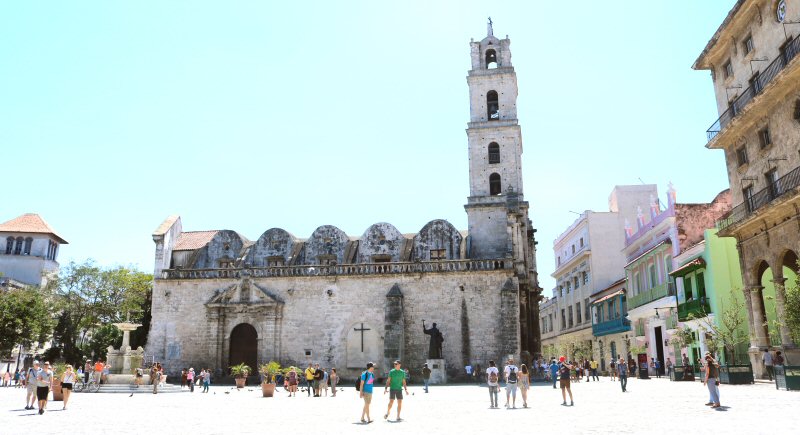
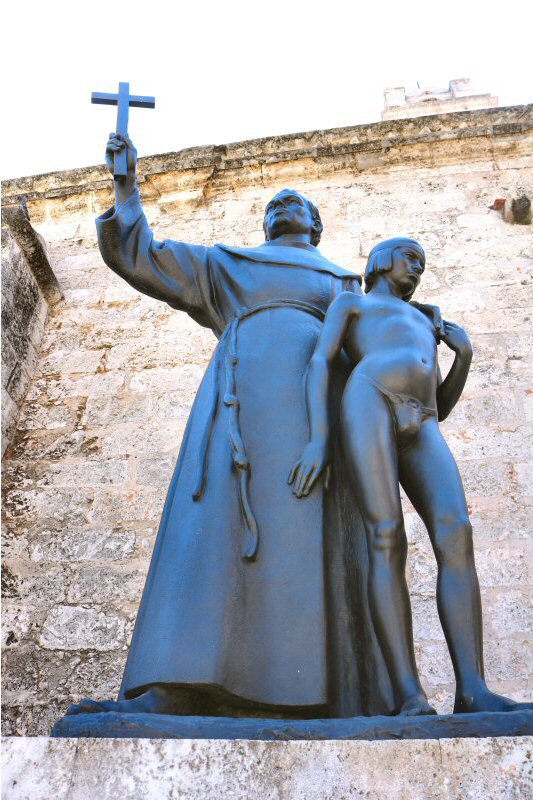
The word basilica is derived from the
Greek term and means royal house. In the Catholic world, there
are two kinds of basilicas: major and minor.
The world’s four major basilicas are
St. John Lateran, St. Peter, St. Paul Outside the Walls, and St.
Mary Major. They all are in Rome.
Minor basilicas are significant
churches in the world that meet certain criteria. Minor
basilicas are traditionally named because of their antiquity,
dignity, historical value, architectural and artistic worth,
and/or significance as centers of worship. A basilica must
“stand out as a center of active and pastoral liturgy,”
according to the 1989 Vatican document Domus ecclesiae.
